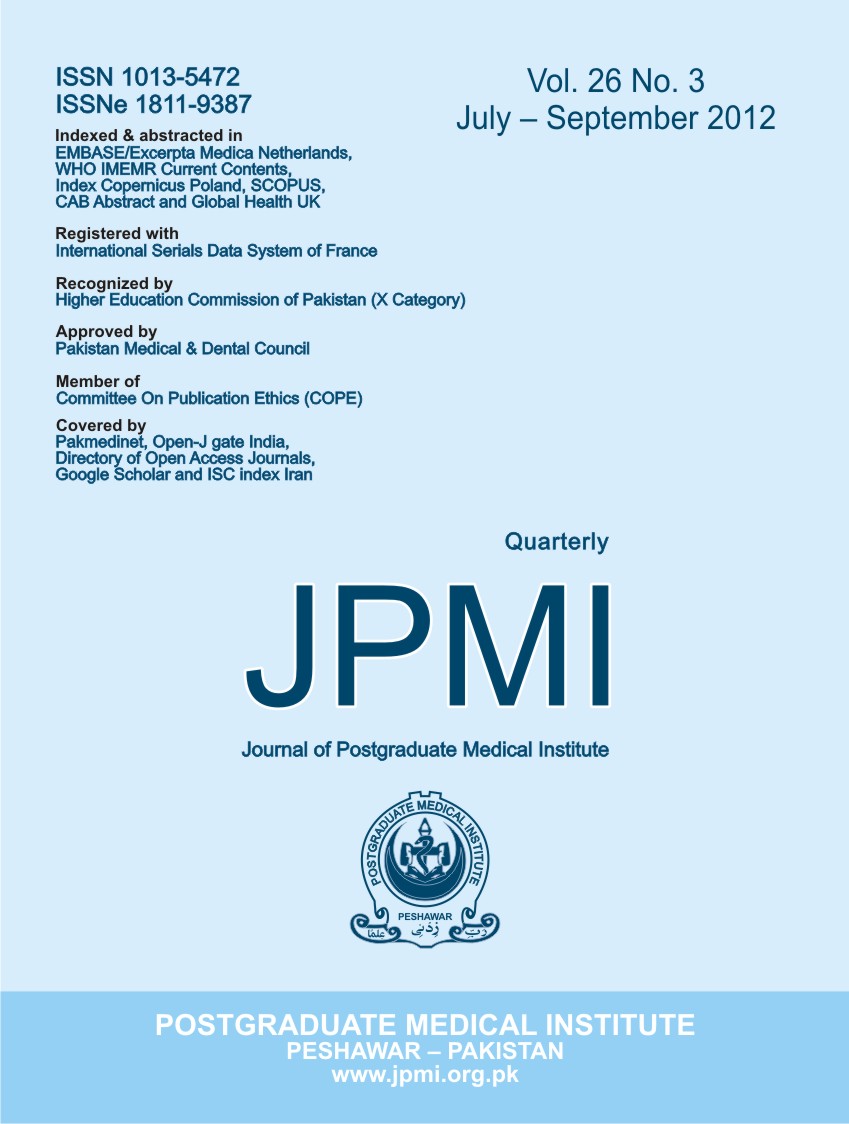CORRELATION OF AXILLARY TEMPERATURE WITH RECTAL TEMPERATURE IN CLINICALLY UNSTABLE NEONATES
Main Article Content
Abstract
Objectives: To test the hypothesis that axillary temperature may not correlate well with rectal temperature
in unstable neonates and to compare the predictive value of axillary temperature recording in unstable
neonates with that of healthy neonates.
Methodology: This cross-sectional and analytical study. Neonates from birth till the age of one month were
included in the study. Axillary temperature and rectal temperature were recorded upon arrival to the unit,
using digital thermometers.
Results: At arrival, 109 neonates were categorized as stable and 117 as unstable. There were no
statistically significant differences in their demographic data such as gender, gestational age, postnatal age
and weight of the neonates in the two groups. Over all mean axillary temperature was 97.020F (SD±2.5)
and mean rectal temperature was 97.990F (SD±2.21). The overall correlation between the axillary and
rectal temperature was 0.632 (p<0.001). A significant difference (P-value <0.001) in the Pearson
correlation (r) between axillary and rectal temperature recording in the two groups was found. A
significant difference was also observed in regression lines between the two groups.
Conclusions: Axillary temperature measurement is not a reliable method of documenting the arrival
temperature in clinically unstable neonates.
in unstable neonates and to compare the predictive value of axillary temperature recording in unstable
neonates with that of healthy neonates.
Methodology: This cross-sectional and analytical study. Neonates from birth till the age of one month were
included in the study. Axillary temperature and rectal temperature were recorded upon arrival to the unit,
using digital thermometers.
Results: At arrival, 109 neonates were categorized as stable and 117 as unstable. There were no
statistically significant differences in their demographic data such as gender, gestational age, postnatal age
and weight of the neonates in the two groups. Over all mean axillary temperature was 97.020F (SD±2.5)
and mean rectal temperature was 97.990F (SD±2.21). The overall correlation between the axillary and
rectal temperature was 0.632 (p<0.001). A significant difference (P-value <0.001) in the Pearson
correlation (r) between axillary and rectal temperature recording in the two groups was found. A
significant difference was also observed in regression lines between the two groups.
Conclusions: Axillary temperature measurement is not a reliable method of documenting the arrival
temperature in clinically unstable neonates.
Article Details
How to Cite
1.
Ahmad I, Khan QA, Iqbal H, Khattak KK, Rehman H. CORRELATION OF AXILLARY TEMPERATURE WITH RECTAL TEMPERATURE IN CLINICALLY UNSTABLE NEONATES. J Postgrad Med Inst [Internet]. 2012 Jun. 29 [cited 2025 Dec. 13];26(3). Available from: https://jpmi.org.pk/index.php/jpmi/article/view/1295
Issue
Section
Original Article
Work published in JPMI is licensed under a
Creative Commons Attribution-NonCommercial 2.0 Generic License.
Authors are permitted and encouraged to post their work online (e.g., in institutional repositories or on their website) prior to and during the submission process, as it can lead to productive exchanges, as well as earlier and greater citation of published work.


